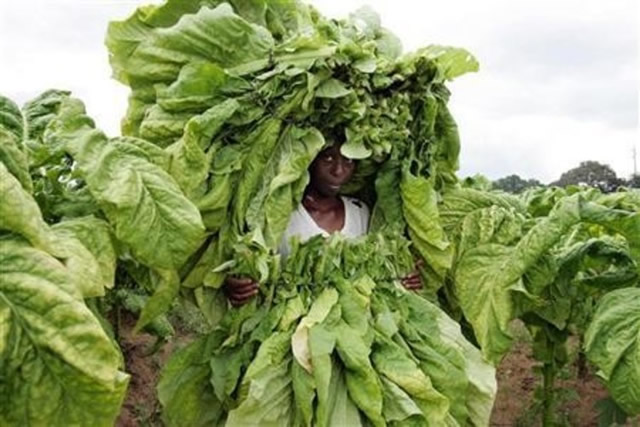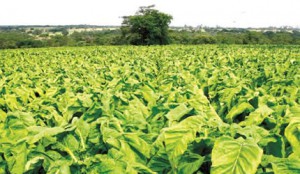Making land reform work


If anything, the lure of quick riches from tobacco farming have turned into a national catastrophe. The whole country is being turned into a desert by people cutting down trees to cure their tobacco
Joram Nyathi Group Political Editor
MEDIA reports estimate that at least 2,2 million Zimbabweans will need food assistance before the harvest this year. This is a staggering figure. However, deputy Agriculture minister Paddy Zhanda has described the figure of 2,2 million as an exaggeration. His view is that there are pockets of food insecure people around the country.
The good and the bad news is that we have had exceptionally good rains this year which have unfortunately created a crisis of their own by washing away crops and displacing thousands of families in the Tokwe-Mukosi dam basin in Masvingo, Muzarabani in Mashonaland Central and Tsholotsho in Matabeleland North.
Those arguing over the number of people who will need food assistance did not foresee the latest catastrophe, which means we have a bigger challenge still whether the figures are inflated or not.
In its blueprint for 2013-18, Zim Asset, Government gives agriculture pride of place under the “Food Security and Nutrition Cluster”.
This is concomitant to the much-maligned land redistribution programme. Zimbabwe should be able to feed itself. Failure to do so would be a boon for those opposed to black economic empowerment.
But progress has been very slow in this area, which could in part explain the reluctance of neighbouring nations to follow Zimbabwe’s bold land reclamation programme.
Over the past few years the country has had to go begging for food aid. Those able to help have had a field day. We have been pointed at as an example to others why they should not destabilise white farmers who seized land through colonial conquest.
No need to over-emphasise how this donor-dependency can be a serious security threat to any nation when it is used to manipulate hungry villagers in the countryside and turn everybody into a cynic about Government programmes.
Estimates put Zimbabwe’s annual maize requirements at 1,8 million metric tonnes.
This year the country is forecast to get about 1,2 million MT.
Zim Asset sets a target of 1,9 million MT by 2018.
This is too small a figure given that an estimated 300 000 families were resettled on about 10 million hectares acquired since 2000.
Part of our problem is that we are simply getting the mix wrong.
The success of the land reform programme is now measured more in terms of how much tobacco is produced per year rather food self-sufficiency, which should be our topmost priority.
If anything, the lure of quick riches from tobacco farming have turned into a national catastrophe.
The whole country is being turned into a desert by people cutting down trees to cure their tobacco.
There is need for Government intervention.
As a country we need stiff penalties for people who wantonly cut down indigenous trees without planting replacements.
The risk is that at the rate trees are being cut and the effects of climate change, we might not be able to produce enough food, hence the task to protect our environment and our future cannot be left to the Environmental Management Agency.
While this disaster is unfolding, Government has not given food production the urgency and priority it deserves.
The supply of seed and fertiliser has often been slow and erratic. When rains come people are found without draught power or fuel.
In fact more resources were poured into this sector during the euphoria of land occupations when people didn’t even know what they were doing, than what is being provided now when people are starting to commit themselves and take farming a serious business.
Everyone who got land for free should be compelled to put a portion of his hectarage under maize.
For its part, Government needs to offer competitive prices, at high enough so that farmers committed to maize production don’t shift to tobacco farming which is proving to have disastrous ramifications.
There is need to urgently provide resources to the GMB and Agribank for them to play their pivotal role in agriculture.
The success of the land reform programme should not be measured in terms of how much tobacco is taken to the sales floors.
It should not be measured purely on the numbers of people resettled nor the number of white former commercial farmers displaced.
It should and must be measured in terms of productivity and the nation’s food self-sufficiency. We cannot continue to import food at a higher cost than we pay local farmers. It’s an embarrassing scandal.
There is also need for detailed and more accurate information on weather patterns.
As this year has just unpredictably demonstrated, it is not enough to tell farmers that “there will be normal to above normal rainfall”.
It gets worse when that normal to above normal rainfall comes late in the season, as happened this year.
By the time the rains came around December a number of farmers in the maize belt of Mashonaland West had not started ploughing.
They had already declared a drought year.
Yet if they had been given accurate information, the situation could have been saved.
Instead we are now faced with the irony of having one of the wettest rain seasons with very low maize production in the country’s richest soils.
We need to get our priorities right. As they say, a hungry man might easily forget his way to the synagogue.
Let Zimbabweans be proud of their country, not to earn the notoriety of a nation which got back all its resources but can’t feed itself.








Comments